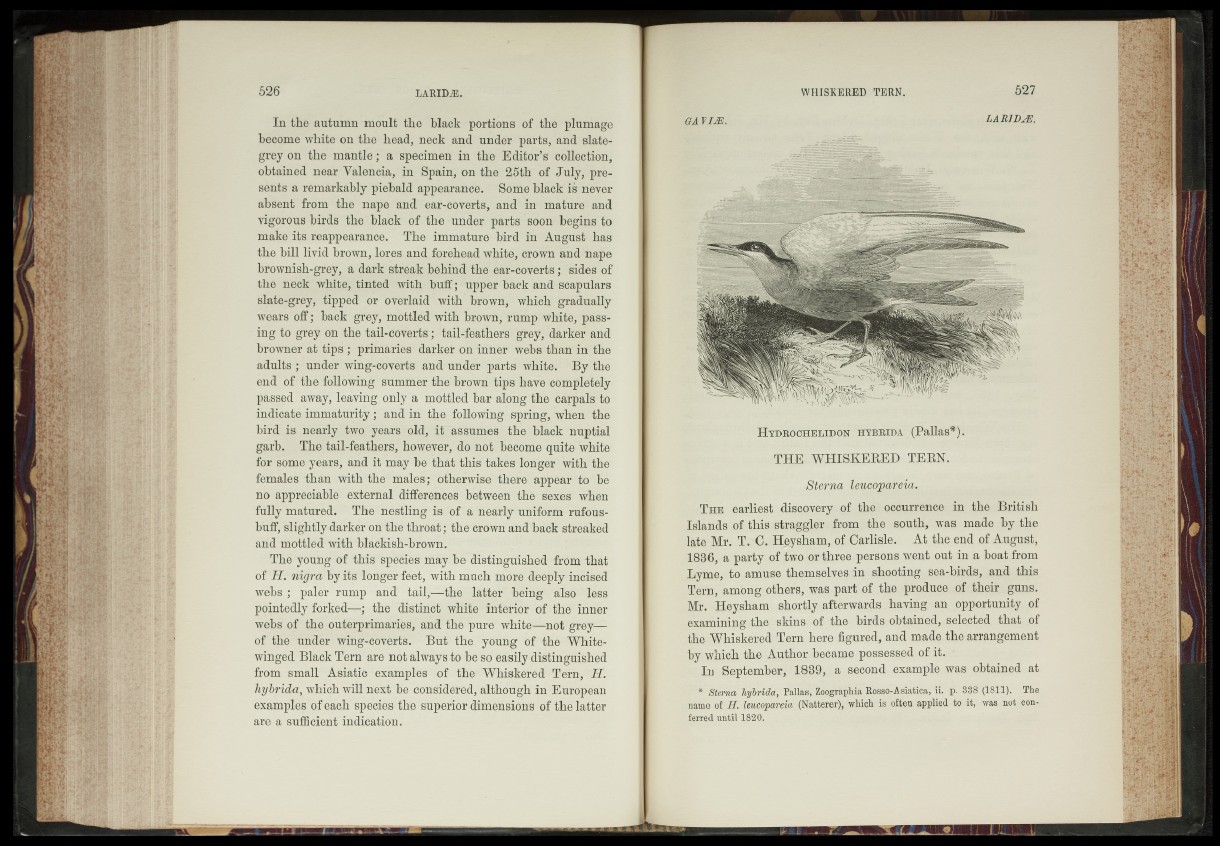
In the autumn moult the black portions of the plumage
become white on the head, neck and under parts, and slate-
grey on the mantle; a specimen in the Editor’s collection,
obtained near Valencia, in Spain, on the 25th of July, presents
a remarkably piebald appearance. Some Mack is-never
absent from the nape and ear-coverts, and in mature and
vigorous birds the black of th e : under parts soon begins to
make its. reappearance. The immature bird in August has
the bill livid brown, lores and forehead white, crown and nape
brownish-grey, a dark streak behind the ear-coverts; sides of
the neck white, tinted with buff; upper back and scapulars
slate-grey, tipped or overlaid with brown, which gradually
wears off; back grey, mottled-with brown, rump White; passing
to grey on the tail-coverts; tail-feathers grey, darker and
browner at tips ; primaries darker on’inner'webs than in the
adults ; under wing-coverts and under parts white. - By the
end of the following summer tire-brown tips have completely
passed away, leaving ortl'y a niOtfei'-bar along the carpals to
indicate immaturity; and in the following spring, when*'the
bird is nearly two' years old, ifassumes the black nuptial
garb. The tail-feathers, however, do not become quite white
for some years, and it may be "that this’takes longer with the
females than with the males; otherwise5 there appear tb'be
no appreciable external differences between'the sexes when
fully matured. The neStlingriBiof a nearly uniform rufous-
buff, slightly darker on the throat; the crown and back streaked
and mottled with blackish-brown. -
The young of this species may§b(Tdistinguished from that
of H. nigra by its’ longerdeetf with much ■ more/ deeplyriheiied
webs ; paler rump and- tail,—the latter being also 'less
pointedly forked—; the distinpb white inferior of'fhe' inner
webs of the outerprimaries, and the'pure' whifce^fnof 'grey—
of the under ‘wing-coverts. But'the * young of the Whitb--
winged Black Tern are not always to he's© easily distinguished
from small Asiatic examples of- the' Whiskered “ Tern, 'H.
hybrida, which will next bereonsidered, although "in European
examples of each species- the superior dimensions of the latteS-
are a sufficient indication.
H y d ro c h e l id o n hy br id a (Pallas*);' -
THE -WHISKERED - TERN.
, leucomxeiaYrr
The earliest discovery.of the. occurrence in the British
Islands of this strag^^feo-m^the south, was made by the
late Mr. T.:C. Hgysham, of Carlisle. At the end of Augus.t,
1836, a party of two or three persons went out in a boat from
Lyme, to amuse themselves in shooting sea-birds, and this
Tejm/ among others, was part of the produce, of their guns.
Mr. Heysham' shortly afterwards having an opportunity^ of
examining the skins of the birds obtained, selected; that of
<the-Whiskered Tern here .figured, and made the arrangement
by which the-Author- became possessed of it.. **
• Iu September, 1839^ a second example was obtained at
* Sterna hybrida, Pallas, Ztfographia Rosso-Asiat,& a , '# f : The
name of. H. leucopareia "(Natterer),-Vhich' is .often -applied to-, it,, was not conferred
nhjfci l <